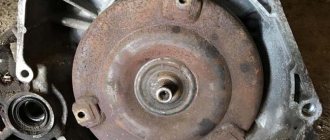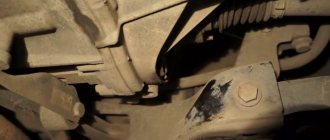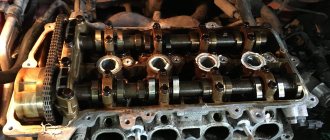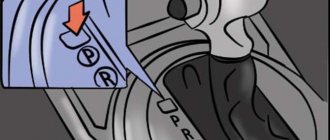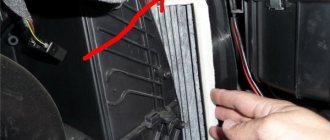Is it worth changing the oil?
The manufacturer claims that the factory lubricant in the Opel Astra H box is designed for the entire service life of the vehicle. Whether this is true depends on climatic and road factors. In Russia, for example, it is necessary to regularly monitor the level, as well as the state of the quality of the liquid. Very often the oil has to be changed after 30 thousand kilometers, or even earlier.
The most popular articles on the site:
- How often should you change engine oil?
- Oil 5w30 and 5w40 what is the difference
- What oil to pour into the engine in winter and summer
- How long does it take to change the automatic transmission oil?
Selecting oil for a high-speed gearbox
Caring for any transmission option involves the car owner monitoring the oil level in the gearbox, as it loses its working properties over time. According to the established regulations, this procedure should be carried out every 15,000 km. Changing the oil in the gearbox is important if problems in the operation of the gearbox begin to be noted, for example, difficulties with shifting gears.
Castrol 75 W-80 Liqui Moly
What kind of oil should I use? Whenever the question arises of changing the oil in an Opel Astra in a box, no matter which model it is H, J or Astra G, you should make a choice in favor of the original options. It is recommended to purchase the following transmission fluid options for the Opel Astra gearbox: GL-4 with viscosity SAE 75W-90, 80W-90 (Castrol, Liqui Moly). Their distinctive feature is that such fuel will not lose its properties when exposed to high temperatures.
By performing timely oil changes, the Opel owner will extend the service life of the gearbox.
Cars of the German concern Adam Opel GmbH are very popular in our country. The Opel Astra N model represents the third generation of the Opel Astra model range. The first cars of this brand rolled off the assembly line in 2004. From then to the present day, the car has won many fans among car enthusiasts in Russia, as well as other countries of the former CIS.
Checking the oil level
Before making sure that the fluid needs to be replaced, you must first check the level of the remaining lubricant. For this procedure, you will need socket wrenches 13 and 17. In addition, you must have a syringe for filling the transmission fluid - if you still need regular topping up and not a complete replacement. So, the procedure for checking the oil is as follows:
- The car is installed on an overpass or lift. As a last resort, a jack will do
- Go under the car and find the gearbox housing located on the side of the gearbox. There is a control hole in the crankcase, which is tightly closed with a plug. If small oil smudges are visible near the hole, then the oil level is normal and nothing needs to be added. If no traces of oil are found and the edges of the drain hole are completely dry, then you will need to add oil. In addition, a regular fill only makes sense if the current oil level is sufficiently clean and free of any dirt deposits or metal shavings. Chips and dirt usually appear with high mileage, and then a complete oil change may be necessary, along with draining the old oil.
- After making sure that the factory oil is clean enough, unscrew the drain plug and add new fluid until the oil begins to pour out. The liquid is filled in using a filling syringe.
- As soon as the oil begins to flow out, at this moment we immediately screw back the drain plug. At this point, the process of adding oil has been successfully completed.
How much oil is in a manual transmission of an Opel Astra
First generation F, 1991-1998
The first Astra was available in a wide range of versions, including the Caravan station wagon and the three-door Actravan cargo version. Sports modifications GT and GSi were also available. At the same time, power steering and a cabin dust filter were available in all trim levels, and as an option, Opel offered air conditioning, a passenger airbag and a leather interior. In terms of design, the car evoked associations with models of the 80s, which were characterized by straight and sharp shapes, devoid of any aerodynamics. In 1994, sales of the updated Astra began with an improved interior, as well as an airbag in the steering wheel. The modified exterior featured an original radiator grille, new headlights and mirrors. There are also new door handles and wheels of a different design.
Also read: Engine oil for Opel Zafira engine
Manual transmission oil: volume – 1.8-2.4 liters with partial replacement
Second generation G, 1998-2004
The 2nd generation Astra did not have a single detail from its predecessor, because it was a car designed from scratch. The developers have radically improved the ergonomics, functionality and driving performance of the popular model. The trim level has gone up and there are new options. The hatchback and station wagon of the same name had excellent aerodynamics thanks to smooth and streamlined shapes that replaced sharp edges. At the same time, the strength of the body also increased, and high safety was ensured by belts with pretensioners and a set of airbags (up to 6 pieces). In 1999, the Bertone studio released an elegant coupe based on the Astra, and in 2001, a new modification, the Astra Cabrio, was created on its basis. Both cars were considered exclusive, although they were not too expensive (they were assembled by hand in the studio). Despite the cessation of production in 2004, in the period 2004-2008 the Astra G car continued to be produced at the GM-AvtoVAZ plant.
Manual transmission oil: volume – 1.8-2.4 liters with partial replacement
Third generation H, 2004-2009
The Opel Astra H was noticeably different from the previous model. Externally, the car became even more streamlined, which once again improved the aerodynamic properties of the body. At the same time, the developers have refined the design and improved the workmanship, and also eliminated one of the main disadvantages of older Astra models - poor corrosion resistance. In addition, the interior design has also changed, which has become more strict and modern. But on the other hand, controversial design decisions appeared in the cabin - for example, the center console had a glossy surface that quickly acquired scratches. And yet, with practicality, the Astra H was in complete order, especially in the family version of the station wagon, which had increased possibilities for transforming the interior. The “charged” version of the OPC was offered with a 2.0 petrol engine producing 241 hp. With. This version also featured a sports body kit, xenon headlights and 18-inch diagonal alloy wheels. The interior was decorated with color inserts and Recaro sports seats.
Also read: Oil for manual transmission Nissan Qashqai
Manual transmission oil: volume – 1.8-2.4 liters with partial replacement
Fourth generation J, 2009-2015
The 4th generation Astra was developed on the modular Delta II platform, and from a design point of view it was similar to the flagship Insignia of 2008. The car body stood out with its aerodynamic and “sculptural” silhouette, evoking associations with sports coupes. At the same time, the developers have introduced numerous technical solutions borrowed from the flagship sedan. The car had a wheelbase of 2685 mm, and the length and width of the sedan body were 4658 and 1814 mm, respectively. Thanks to its ground clearance of 165 mm, the Astra was well adapted for harsh Russian road conditions. Opel also worked on the practicality of the Astra, which received a 460-liter trunk, the volume of which increased to 1010 liters when the rear seat back was folded in a ratio of 40:60. Moreover, a full-fledged spare tire was installed under the trunk floor. The interior of the Astra J, like the exterior, also evokes associations with the flagship Insignia. Thus, the strict straight lines in the interior were replaced by smooth and curved shapes, and the center console was distinguished by an ergonomic push-button interface, which surprisingly turned out to be easy to learn (after restyling, there were fewer buttons due to the appearance of a multimedia screen).
Manual transmission oil: volume – 1.8-2.4 liters with partial replacement
Fifth generation K, 2015-2020
The fifth generation Astra is designed on the second generation Chevrolet Cruze platform. The design of the car evokes associations with the previous model, but the developers have made improvements to the aerodynamic properties, resulting in more smooth curves and streamlined lines in the exterior. The front of the car looks recognizable due to the signature radiator grille and stylish LED head optics. In the fifth generation, Astra is presented only in hatchback and station wagon bodies, which are sold mainly in Europe. The car has a wheelbase of 2662 mm, and the body length can reach 4702 mm, which is an indicator of the D-class. In Europe, Astra K is equipped with gasoline engines of 1.0 and 1.4 liters (105-150 hp), as well as 1.6 liters (200 hp). There are also diesel modifications with a volume of 1.6 liters (160 hp). Gearboxes - manual or automatic.
Also read: Oil for manual transmission Lada Largus
Manual transmission oil: volume – 1.8-2.4 liters with partial replacement
Procedure for a complete oil change
This procedure is slightly different from the above process, and consists of the following steps:
- The first step is to prepare the materials: a container for draining used oil, a set of tools, including wrenches and sockets, as well as rags, a filling syringe, rubber gloves, a new gasket and 2 liters of gear oil.
- Warm up the engine and oil in the box in advance so that the liquid becomes more fluid. This will speed up the draining process
- The machine is installed on a lift
- In the upper part of the gearbox housing, the gearbox filler plug is unscrewed
- At the bottom of the gearbox housing, the gearbox drain plug is unscrewed, and the old fluid is drained into a pre-prepared pan. If access to the plug is difficult, then you will have to remove the pan and gasket. The gasket will then need to be replaced with a new element. You can use sealant instead
- After draining the used oil, we move on to the next step - adding fresh oil. We leave the pit and use a syringe to fill in new oil. The fluid should come out of the inspection hole, after which the process of changing the oil in the Opel Astra H manual transmission can be considered successfully completed.
- Now all that remains is to tighten all the holes tightly, including the filler plug, then you can take a test drive and measure the fluid level. The oil may need to be added a little over the course of 2-3 weeks.
Auto repair and maintenance
First, loosen the plug, which allows you to control the oil level. This plug is located on the gearbox housing and needs to be unscrewed.
If the liquid is on or near the edge, then there is enough oil. At normal levels, the liquid can be easily reached with a finger. At a lower level this will not be possible. In this case, you will need to loosen the plug covering the fill hole and unscrew it.
Remove the cover and gasket. Wipe the cover and gasket with a clean rag to remove any remaining oil. Replace the gasket with a new one each time you remove the bottom cover.
Install the lower cover of the gearbox and fill in the oil as you did when checking its level and topping it up, see. To check the fluid level, topping it up or replacing it in an automatic transmission, you will need: Place the car on a flat horizontal platform and brake with the parking brake.
To make driving with such a transmission comfortable, you need to follow a few simple rules. When changing gears, you should release the accelerator pedal, otherwise the control unit will do this - as a result, you will get dips and jerks.
The ECU control unit will regard the release of gas as a signal to switch. If the car is stopped, the selector lever must be set to neutral.
You cannot leave the car in the parking lot with the gear engaged - only neutral position and the handbrake on. Measuring the oil level and topping it up Caring for the transmission requires periodic monitoring of the oil level in the gearbox.
What kind of oil to fill
This procedure must be carried out at least every 15 thousand. It should be noted right away that the manufacturer does not intend to replace the working fluid in the manual transmission throughout the entire period of operation. But such a solution is only possible when road and climatic conditions are close to ideal. In fact, reality dictates different decisions. This grease will not thicken at low temperatures.
Fuel consumption for automatic and manual transmissions
Fuel consumption is a fairly important indicator of the performance of a car engine, which many car enthusiasts pay attention to when choosing a suitable vehicle.
Below is a table showing actual fuel consumption when using automatic and manual transmissions.
| Gearbox and fuel type | Fuel consumption, l |
| Automatic transmission, diesel | 6 |
| Automatic transmission, petrol | 6,8-7,2 |
| Manual transmission, diesel | 6.1 |
| Manual transmission, petrol | 6.4 |
Thus, it becomes clear that cars equipped with a manual transmission are also more profitable in terms of fuel consumption - they save significantly compared to an automatic transmission.
Level and condition
Every car owner is required to monitor the oil level in the engine and gearbox. For this, automakers have provided special probes. In the case of the Opel Astra H car, the automatic transmission oil dipstick is located in the engine compartment. Through its hole, the level is checked and fresh transmission fluid is filled. To assess the current level, just remove the dipstick, wipe it, put it back and pull it out again. By following the traces of oil on the level meter, you can find out approximately how much oil is currently in the automatic transmission.
You can drop oil from the same dipstick onto a regular paper napkin. If the oil is poorly absorbed, has an uncharacteristic color, smell and traces of impurities, this indicates wear of the composition and the need to replace it. Before every long trip, do not forget to check the oil level in the gearbox. Since the Opel Astra H cannot boast of the most reliable automatic transmission, its condition has to be monitored more carefully. If the automatic transmission shows that the Astra H is experiencing a shortage of transmission fluid, or the composition itself has worn out, then it is better not to delay, but to carry out the replacement procedure as soon as possible.
Replacement methods
In total, there are three main methods for changing the working fluid in the Astra N automatic transmission. Car owners choose among:
- partial replacement;
- average;
- complete.
If you change the oil in a box using a partial method, you won’t be able to achieve much effect on fairly worn boxes. For an automatic transmission with low mileage, this will be enough. The middle method is considered the best option. This is not a complete replacement, but not a partial one either. An intermediate choice that most owners of Opel Astra N cars focus on.
A complete replacement is somewhat more complicated, but it will help in the most difficult and advanced situations with wear of the automatic transmission and its working fluid. Therefore, when choosing a replacement method, focus on the specific situation. We will try to tell you in detail about each of the proposed options.
First method
When the Astra has low mileage or is in good condition, the method of partially replacing the transmission fluid in the automatic transmission is suitable. For this procedure you will need to perform a few simple steps:
- Under the car there is a drain plug for the automatic transmission oil sump;
- the plug is removed with a 10 mm hex key;
- an empty container is placed under the cork, where, after unscrewing the cork, the waste is drained;
- Fresh lubricant is poured through the hole for the automatic transmission dipstick.
Using this method, it is possible to get rid of approximately 3 liters of old gear oil. You pour the same amount back through the filler neck. Theoretically, partially renewed fluid will be enough for 25–40 thousand kilometers. But it’s better to do this next time no later than 30 thousand kilometers. For relatively new cars, this option is suitable. But if the mixture in the automatic transmission is heavily worn, a partial replacement will not be of much use.
Second method
Here, in addition to draining the oil using a drain plug, you will need to get rid of the fluid in the automatic transmission oil line. This technique makes the replacement more productive, since a larger amount of lubricant is drained. Replacement will require about 5 liters of new ATF. But this still does not allow 100% of the waste to be drained. But it extends the life of the car until the next maintenance. Changing the working fluid using the second method looks like this:
When adding new fluid, try not to overfill or pour too little mixture into the automatic transmission. To avoid making a mistake with the quantity, measure the volume of drained waste and pour a little less of this amount into the crankcase. Then add a little more as needed. Start the engine, check the oil level on the dipstick. Now lean on the side with the marks where it says +20. As the engine warms up, the level will begin to gradually increase. It is advisable to travel about 20 kilometers. This will warm everything up to the desired level. Then you need to go back to the garage. Insert the dipstick into the crankcase, but now start from the level indicators on the +80 side. If you see a lack of oil, add a little more liquid.
If there is too much oil, be sure to drain the excess. Otherwise, problems will arise during subsequent operation of the car.
Replacing the lubricant
Mineral oil should not be used as a replacement. Fill in synthetic or semi-synthetic with the viscosity parameters indicated above.
You can also look at the vehicle documentation. Since replacement of lubricant is not provided for according to technical conditions, there is no drain hole in the gearbox. Therefore, you will have to drain the boxes through the pan, loosening the fastening bolts.
In order to complete this work, you will need the following materials:
- A container where the waste liquid will be drained;
- set of wrenches;
- rags and a large syringe;
- a new gasket for the manual transmission pan (its catalog number is 03 70 034), if not, then use sealant.
In addition, 4 liters of new lubricant should be prepared. The crankcase volume in a manual transmission is 2 liters. Next, actions are performed in a certain sequence.
- A car with a heated transmission is installed on an overpass or above an inspection hole.
- Unscrew the oil filler plug in the upper part of the gearbox housing.
- The fastening bolts in the pan are loosened, and a drainage container is immediately placed.
- The old lubricant mixture is drained. During this procedure, the pan and the old gasket are removed.
- After the old fluid has drained out, the seat of the pan is cleaned, a new gasket is installed and the pan is screwed on. If you don't have a new gasket, use sealant. Be that as it may, the old gasket cannot be reinstalled.
- Most of the new working fluid is poured through the filler plug. To completely remove the used lubricant, you need to unscrew the inspection hole in the lower part of the gearbox housing.
- Old grease will begin to pour out through it, so do not forget to replace the container in time. There is no need to rush, as this procedure will last about 10 minutes.
- After this, oil is gradually added through the filler hole using a syringe until it appears from the control hole.
- The inspection and filler holes are screwed in.
After finishing the work, a short test drive is required so that the lubricant warms up and spreads throughout the manual transmission. After this, you can check the level of the working fluid again and, if necessary, top it up.
Changing the oil in the automatic transmission of the Opel Astra N is carried out in the same sequence. The machine also does not have a drain hole, so you have to remove the oil through the pan. In addition, you should have an 8 square wrench with you.
- What kind of oil should I fill in the manual transmission of the Opel Astra N?
- How is oil changed
? - Manual Transmission
- Video tips for gearbox maintenance
Does Opel Astra need an automatic transmission oil change? This issue leads to many disputes among motorists. The manufacturer says that it is not necessary to change the oil in the gearbox, but the German car ferry rarely expects that the car will be used for more than four years, and it will be used in difficult road conditions typical of the Russian Federation. Based on this, changing the oil in the Opel Astra N gearbox and other modifications is vital for the car
. By draining the waste liquid, you rid the box of slag, other debris and metal shavings that appear as a result of the operation of the mechanism.
The more often you change your fluids, the longer your vehicle's moving parts will last. On average, this procedure should be performed once every 30 thousand kilometers. Some car enthusiasts wait up to 60 thousand, others try to change it at 15 thousand mileage.
The optimal figure is approximately in the middle of these values.
